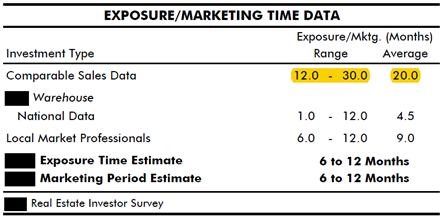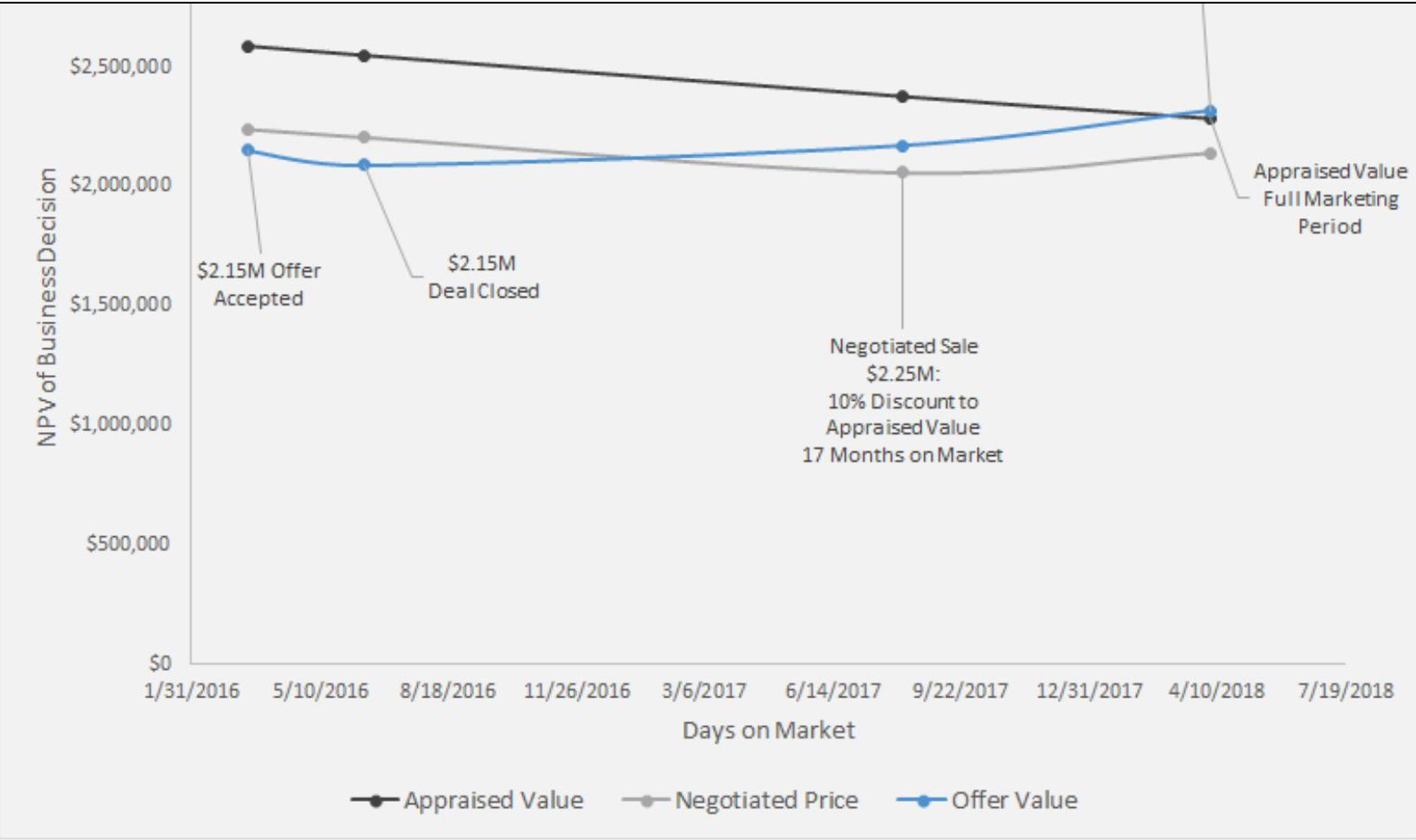The most powerful marketing tool for selling commercial real estate is… THE PRICE! And the longer a property sits listed on market the lower its perceived value, and demand, can fall. Considering where we are in the current market cycle, days on market (DOM) may ultimately kill your deal. That’s why at Rhenium Capital we view CRE deals from some non-traditional angles for our valuation & advisory services. While we of course prescribe to the three industry standard valuation approaches- cost, sales and income- we also utilize other CREtech tools and data sources to really dig into a deal and hopefully discover what may go unnoticed to others.
Our methodology evolved out of necessity, as we were exposed to a massive volume and variety of deals in our past positions running a national V&A group at one of the world’s largest CREtech firms. More specifically, days on market is one of our favorite data points for deal valuation, negotiation and strategy. Here’s a recent real world example where we helped a client negotiate and execute a deal with an institutional owner initially deadest on selling at appraised value:
 Per the appraisal:
Per the appraisal:
“Current appraisal guidelines require an estimate of a reasonable time period in which the subject could be brought to market and sold. This reasonable time frame can either be examined historically or prospectively. Appraisal Company Inc. has concluded an exposure/marketing time of 6 to 12 Months to be reasonable for the subject. The marketing/exposure time would apply to all valuation premises included in this report.”
We understand the process of taking a property to market. A standard 6 - 12 month marketing period often calls for one to leave some wiggle room in a list price to negotiate over time for best execution. But in a less than liquid market with extended time periods from initial list to close, the seller is often times losing money. Any professional should consider days on market to best advise their clients on strategy. After all, time IS money.
In the case of this deal, there was also some deferred maintenance and minor environmental cleanup needs estimated at roughly $150K by a national engineering firm. Our independent review of sales comparables indicated an average marketing time of 751 days, or 25 months, more or less in-line with the appraisal’s range of 12-30 months. Utilizing a 25 month marketing period as a benchmark, along with the local market cap rates as a discount rate and reinvestment rate (6% for both) we found that, for the seller, disposing the property as-is at a lower price and quicker close would ultimately yield them more cash. In fact, reinvesting the cash after a quick close beat out negotiating a sale over the longer term AND selling at the appraised value over the AVERAGE listing period in this market. Needless to say, the seller agreed and all parties involved immediately benefited.
 In closing, we absolutely feel that a thorough analysis of the average days on market for comparable sales should be considered in pricing and marketing strategy in CRE transactions. Large CREtech sites such as Co Star and Loopnet often provide data on much of their comparable sales records. Still, it seems that the 6 – 12 month assumed marketing standard has not budged in valuation, advisory and appraisal services.
In closing, we absolutely feel that a thorough analysis of the average days on market for comparable sales should be considered in pricing and marketing strategy in CRE transactions. Large CREtech sites such as Co Star and Loopnet often provide data on much of their comparable sales records. Still, it seems that the 6 – 12 month assumed marketing standard has not budged in valuation, advisory and appraisal services.
Why are we still ONLY using 1980’s methods to value and advise CRE transactions when we have access to so many tools in the information age?











